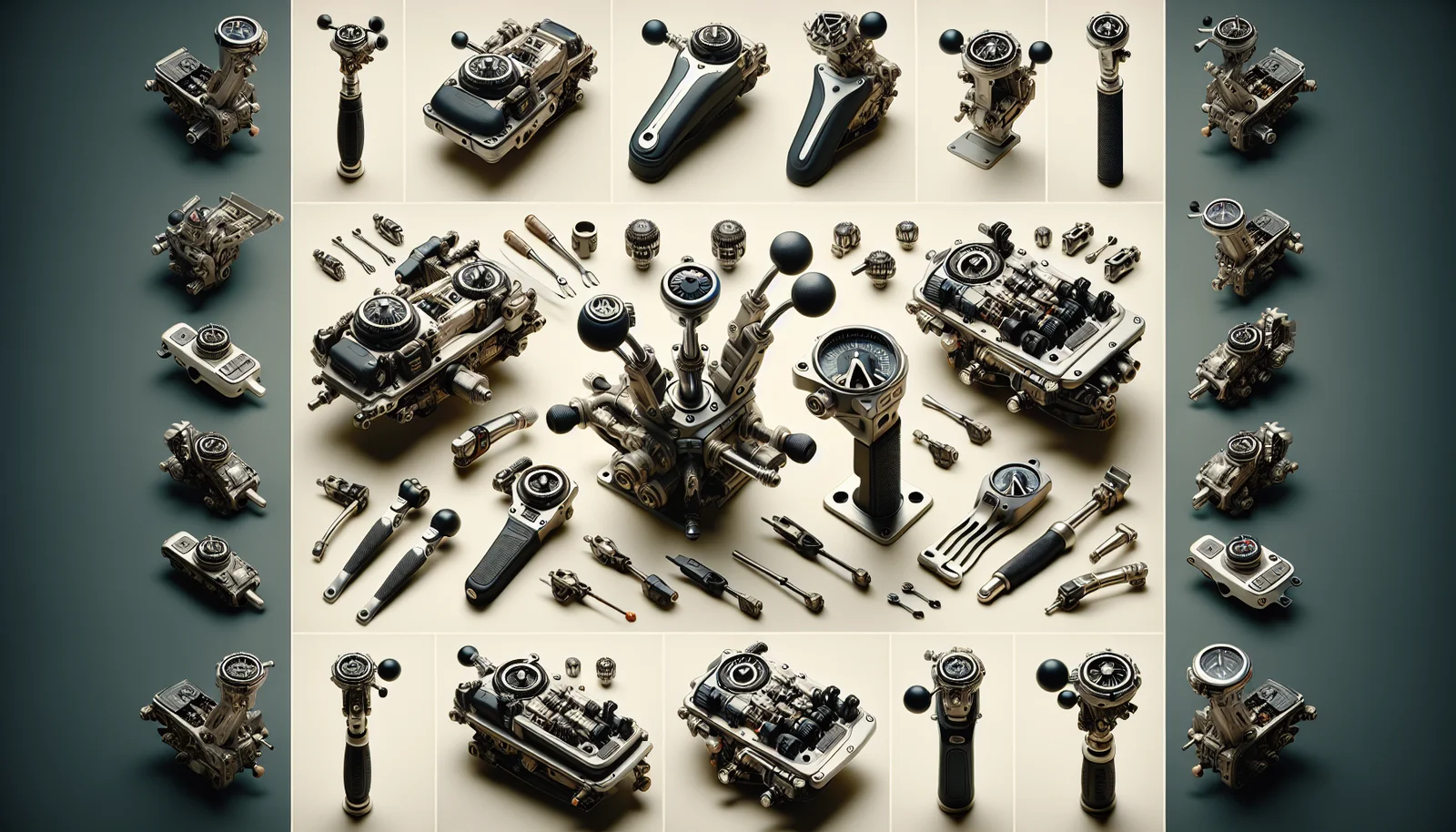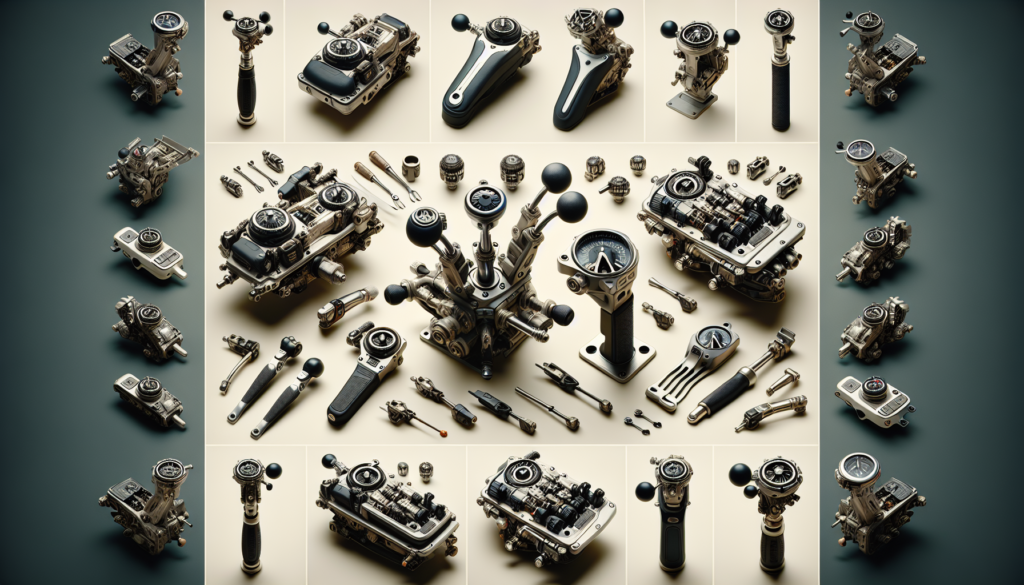Understanding Mechanical Boat Throttle Controls
When you’re out there on the vast blue, navigating your boat, it’s essential to clearly understand how your vessel’s throttle control works. The throttle control is the heart of your boat’s engine system; it propels you forward, slows you down, and helps you maneuver your way through the water.
Fundamentals of Mechanical Throttle Controls
Mechanical throttle controls, also known as manual throttle controls, are probably the most straightforward type of throttle control to understand. These systems, as you might have guessed from the name, operate mechanically via a system of cables or levers. When you move your throttle lever forward, it physically opens the throttle valve in your engine, allowing more air in and increasing power and speed. Pulling back reduces power and slows the boat down. The notable aspect of mechanical controls is their direct feel and immediate response.
Benefits of Mechanical Throttle Controls
One of the primary benefits of mechanical throttle controls is their simplicity. There’s minimal complexity to these systems, meaning there’s less that can go wrong, and when something does go wrong, it’s typically easier (and often cheaper) to fix. What’s more, because of the direct mechanical connection between your hand and the engine, many boaters feel that these systems allow for more precise control.
Drawbacks of Mechanical Throttle Controls
Unfortunately, mechanical throttle controls do come with some drawbacks. They can be physically demanding to operate for long periods, given that you’re physically manipulating the throttle valve. Moreover, they can also be less smooth than other types of throttle systems, which may lead to a less enjoyable boat ride. Also, mechanical systems do typically require more maintenance than electronic ones.
Delving Into Electronic Boat Throttle Controls
The digital wave has also reached the boating industry. Now we have electronic throttle controls that harness the power of technology to offer more precision and ease of use.
Basics of Electronic Throttle Controls
Electronic throttle controls, sometimes referred to as “drive-by-wire” systems, use electronic signals to control the throttle. Instead of physically opening and closing the throttle valve, when you push the throttle lever forward, it sends a signal to a computer, which then opens the throttle valve. This system provides a smooth and predictable operation.
Advantages of Electronic Throttle Controls
The most significant advantage of electronic throttle controls is their smoothness and effortless operation. They offer superb control over the boat’s speed with just the touch of a button or slide of a lever. These systems typically require less maintenance than mechanical ones, and they may also include features like automatic syncing of multiple engines.
Downsides of Electronic Throttle Controls
Despite the benefits, electronic throttle controls have their share of downsides. They can be more expensive to install and repair. Furthermore, the lack of a physical connection between the throttle lever and the engine might cause a delay in response time. This can make some people feel less in control of their boat’s speed and response.
Examining Hydraulic Boat Throttle Controls
Hydraulics is another significant player in the world of throttle controls, leveraging the power of liquid dynamics to offer efficient and smooth control over your boat’s speed.
Core Concept of Hydraulic Throttle Controls
Hydraulic throttle controls utilize a set of hydraulic lines to transmit pressure from the control lever to the boat’s engine. When you move the control lever, it pressurizes the hydraulic fluid, which then moves the throttle valve. Like electronic controls, hydraulic ones also offer a smooth operation.
Merits of Hydraulic Throttle Controls
Hydraulic throttle controls deliver power efficiently, making them ideal for larger boats and commercial vessels. They’re also renowned for their smooth operation, letting you accelerate and decelerate the boat without the abrupt changes that you might experience with a mechanical system. Hydraulics are also highly reliable and require less effort to operate than their mechanical counterparts.
Demerits of Hydraulic Throttle Controls
The main downside here is the potential for leaks in the hydraulic lines, which can lead to costly repairs. Furthermore, they can be more expensive to install than mechanical systems, although they usually require less frequent servicing.
Understanding Push/Pull Cable Boat Throttle Controls
Push/pull cable controls are a subclass of mechanical controls, but they warrant their discussion due to their prevalent application in a variety of boats.
Functionality of Push/Pull Cable Throttle Controls
In push/pull cable systems, your control lever is directly connected to the throttle valve by a cable. Pushing or pulling the lever directly opens or closes the throttle, using physical tension in the cable to communicate your inputs. It’s a simple and effective solution.
Pro’s of Push/Pull Cable Throttle Controls
These systems are cost-effective, reliable, and relatively easy to fix and maintain. This simplicity, combined with their robust performance, is why you’ll find them on everything from small fishing boats to larger recreational craft.
Con’s of Push/Pull Cable Throttle Controls
On the flip side, push/pull systems can be a bit less smooth than their hydraulic or electronic counterparts, and they also require more physical effort to operate. Over time, cables can stretch, fray, or snap, necessitating replacement.
Exploring Single Lever Throttle Controls
Single-lever throttle controls are a popular option, balancing simplicity with efficient control.
Principles of Single Lever Throttle Controls
With a single-lever system, one control lever manipulates both the throttle and the gear. Pushing the lever forward increases engine speed and engages the forward gear while pulling it back engages the reverse gear while also reducing speed.
Positives of Single Lever Throttle Controls
Single-lever throttle controls are intuitive and simple to use, helping to reduce confusion. They are often less expensive than dual lever systems and are ideally suited for boats that are operating with a single engine.
Negatives of Single Lever Throttle Controls
While single-lever controls are natural to use, they do offer fewer options when it comes to controlling multiple engines. It can also be challenging to achieve a neutral throttle position with these controls.
Familiarizing With Dual Lever Throttle Controls
Just as the name suggests, dual lever throttle controls utilize two levers instead of one for controlling the speed and gear of the boat.
Working of Dual Lever Throttle Controls
In a dual-lever system, one lever typically controls the gear while the other dictates the throttle. This separation of functions allows the user to manage the engine’s power and direction independently, providing a greater degree of control.
Upsides of Dual Lever Throttle Controls
The dual lever system shines brightest in twin-engine setups. They allow you to manipulate each engine’s throttle and gear engagement independently, which can be a major benefit when docking or maneuvering in tight spaces.
Limitations of Dual Lever Throttle Controls
The main downside here is complexity. Operating two different levers may be confusing for novices, especially in stressful situations. They also tend to be more expensive than single-lever setups.
Decoding Foot Pedal Throttle Controls
Foot pedal throttle controls are an engaging alternative to hand-operated throttle controls, freeing up your hands for other tasks.
Operation of Foot Pedal Throttle Controls
When using foot pedal controls, you use your foot to control throttle and boat speed. You press down to increase speed and lift your foot to reduce it. Some systems even include a reverse function, so you can adjust your boat’s path by merely shifting your foot.
Benefits of Foot Pedal Throttle Controls
Foot pedal controls can be a great alternative if you want to free up your hands for fishing, steering, or other tasks. They’re incredibly intuitive, and because of the foot’s strength, you may find you can make more nuanced throttle adjustments with your foot than with your hand.
Disadvantages of Foot Pedal Throttle Controls
The key downside is that, unlike with hand throttle controls, you can’t “set and forget” your throttle with a foot pedal; you need to maintain constant pressure on the pedal to keep your boat at speed.
Getting Acquainted with Fly-By-Wire Throttle Controls
Fly-by-wire throttle controls are the most technologically advanced option out there, offering unmatched convenience and additional features.
Overview of Fly-By-Wire Throttle Controls
Fly-by-wire throttle systems replace physical connections between the control lever and the throttle body with electronic ones. When you move the lever, a sensor reads its position and sends that data to the engine’s computer, which then adjusts the throttle body.
Strengths of Fly-By-Wire Throttle Controls
These systems provide the smoothest operation out of all the throttle control types, and they have the benefit of additional features like automated engine syncing and cruise control.
Weaknesses of Fly-By-Wire Throttle Controls
Fly-by-wire throttle controls can be expensive to install and repair, and they necessitate a reliable electrical system on your boat to ensure they operate correctly.
Discerning Wireless Remote Throttle Controls
Wireless remote throttle controls take convenience one step further, allowing you to control your boat’s speed from anywhere on your vessel.
Introduction to Wireless Remote Throttle Controls
Wireless throttle controls use radio frequencies to send commands from a handheld remote to your boat’s engine. Like fly-by-wire systems, they offer unmatched flexibility and control.
Assets of Wireless Remote Throttle Controls
Wireless throttle controls are incredibly versatile, giving you the freedom to monitor and adjust your boat’s speed from anywhere on board. They can be particularly useful on larger boats with multiple stations.
Drawbacks of Wireless Remote Throttle Controls
One significant downside of wireless throttle controls is their dependence on reliable radio signals, which can be blocked or interfered with. They also rely on a consistent power source for the remote and can be comparatively costly.
Understanding Side-Mounted Throttle Controls
Last but not least, let’s delve into side-mounted throttle controls, a standard and convenient control placement option that’s quite preferred by many.
Understanding the Design and Function of Side-Mounted Throttle Controls
Side-mounted throttle controls, as the name suggests, are mounted on the side of your helm or dashboard. They can come in single or dual-lever designs, and they could be mechanical, electronic, or hydraulic.
Gains of Side-Mounted Throttle Controls
The main advantage of side-mounted controls is their accessible placement. Because they’re at your side, you can operate them without needing to take your eyes off the water. They also tend to be in a comfortable location for prolonged use.
Restrictions of Side-Mounted Throttle Controls
All in all, understanding the different types of throttle controls can be a substantial aid while maneuvering the waters. Remember, the best throttle control is the one that gives you confidence, offers enough precision and control, and makes your boating experience enjoyable and safe.



